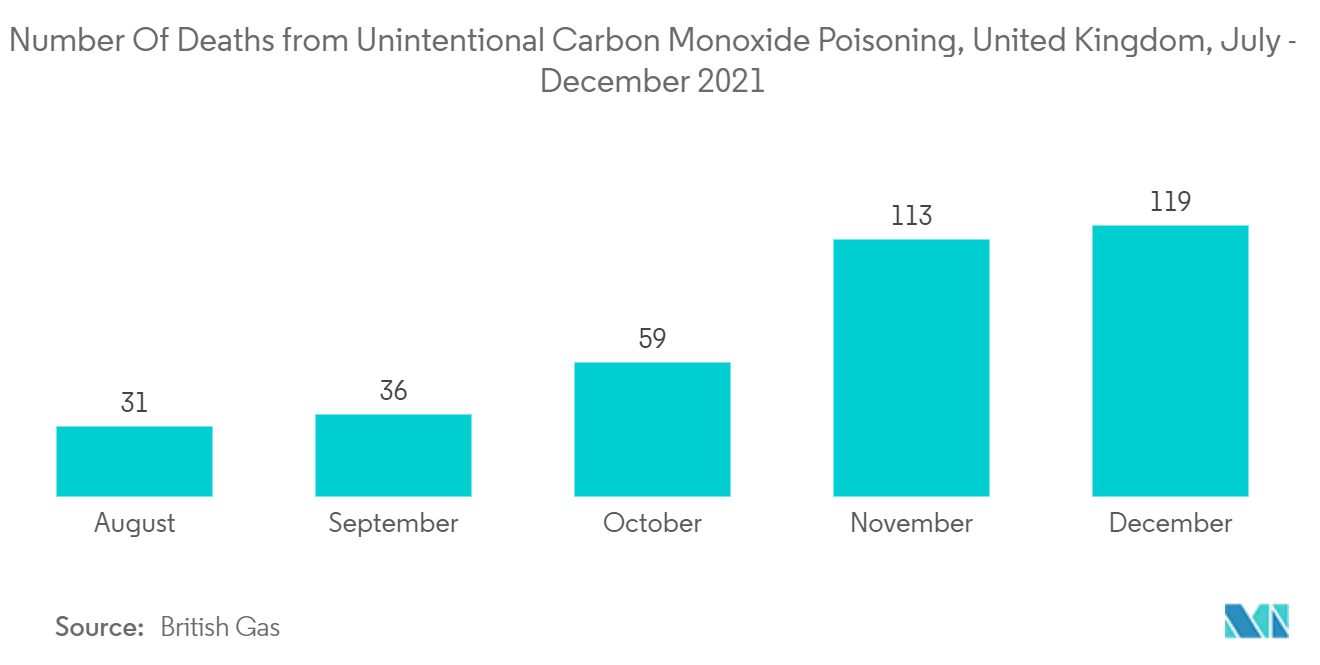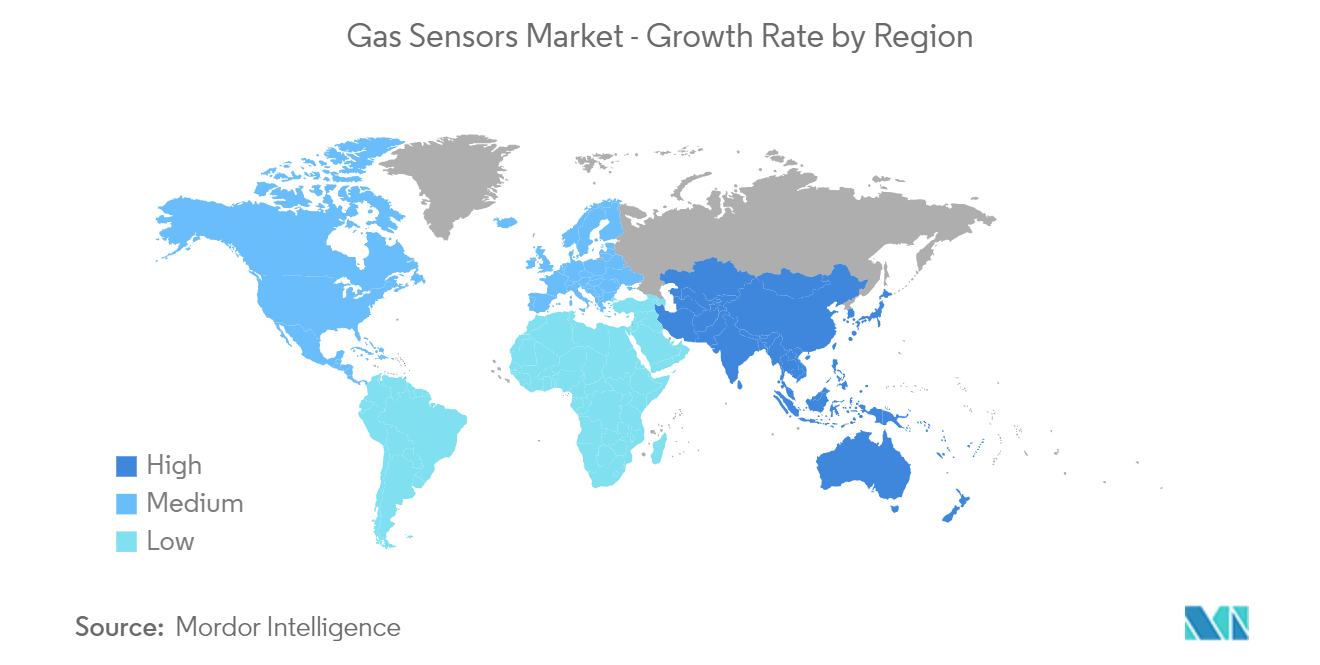Market Trends of Gas Sensors Industry
Safety and Regulations are the Primary Drivers for Industrial Implementation
- Various sorts of gases have been utilized as raw materials in different industries in recent years. It becomes significantly crucial to control and monitor these gases, as there is a large risk of damage to property as well as human lives if a leak occurs. Therefore, the necessity to continually monitor and control the gases emitted sprouted a requirement for gas sensors in industries.
- Moreover, the stringent government regulations further mandated the gas sensors' applications in order to make the industries safer. This turned industries more confident about preventing accidents related to gas leaks. For instance, as per the Center for Disease Control and Prevention study, approximately 50 people in Canada die per year from CO poisoning. Resultantly, adopting carbon monoxide (CO) gas sensors is beneficial, as these products can unknowingly lead to dangerous levels of CO gas building up within the homes.
- Furthermore, gas sensors have witnessed increased adoption in intelligent homes due to efficient energy usage and the safety of inhabitants. Furthermore, the implementation of government standards and regulations for following and installing these devices. For instance, the National Fire Protection Association published a standard that is referred to as NFPA 720 includes sections 5.1.1.1 and 5.1.1.2, as per which all CO sensors should be located outside of each sleeping area in the immediate vicinity of all the bedrooms, and every detector should be located on the ceiling, walls, or other locations as mentioned in the installation instructions that accompany the unit.
- Moreover, rapid industrialization, coupled with the increasing requirement for wastewater treatment from the refining and pharmaceutical industries, are among the important factors driving the growth of the market. Also, the rising demand for potable water across the world is having a positive impact on the demand for gas sensors as they are largely used in water treatment facilities to monitor for the presence of various chemicals such as chlorine and alert workers if there is a leak or other problem. This is because of government norms such as the Central Pollution Control Board issued directions under section 18(1) b of the Water and Air Acts to the State Pollution Control Boards and Pollution Control Committees for directing the 17 categories of largely polluting industries that include Sewage Treatment Plants (STP).
- The pressing requirement for treated, clean water is being accelerated by the increasing global population and expanding manufacturing sector. Thus, gas sensors are commonly used in wastewater treatment facilities to monitor a variety of gases, such as hydrogen sulfide, methane, and carbon dioxide, that are often used in wastewater facilities.

Asia-Pacific is Expected to be the Fastest Growing Market
- The Asia-Pacific region has been considered one of the most rapidly rising regions for the gas sensors market, and it is expected to be the market leader during the forecast period. The rising awareness regarding the impact of air pollutants on human health in countries such as India and China is propelling demand for gas sensors for air quality monitoring.
- For instance, in September 2022, Figaro Engineering Inc. announced the introduction of the KE-LF series of lead-free galvanic cell oxygen sensors for safety, environmental gas monitoring, food, and educational applications. Maxell Ltd. develops this product in Japan and consists of the KE-25LF and KE-25F3LF, lead-free galvanic cell-type oxygen sensors. They incorporate a long life expectancy of around five years in excellent chemical durability, ambient air, and no influence from H2S, CO2, or SO2. Moreover, these new sensors have the same dimensions as existing KE series oxygen sensors, facilitating onsite quick and easy replacement of current KE series oxygen sensors.
- The rising use of gas sensors in automobiles for passenger comfort and safety has been further driving the growth of manufacturing gas sensing applications. As per the IBEF, India has turned out to be a strong market in terms of both domestic demand and exports, and the total passenger vehicle sales in FY22 approximated 3.07 million, with India exporting 5,617,246 vehicles.
- Furthermore, India is also the largest provider of generic drugs globally. Furthermore, the Indian pharmaceutical sector supplies 50 percent of the global demand. These pharmaceutical production facilities utilize various solvents and gases in the manufacturing process and are required to be continuously monitored, which surges the demand for gas sensors, thereby increasing the market growth.

